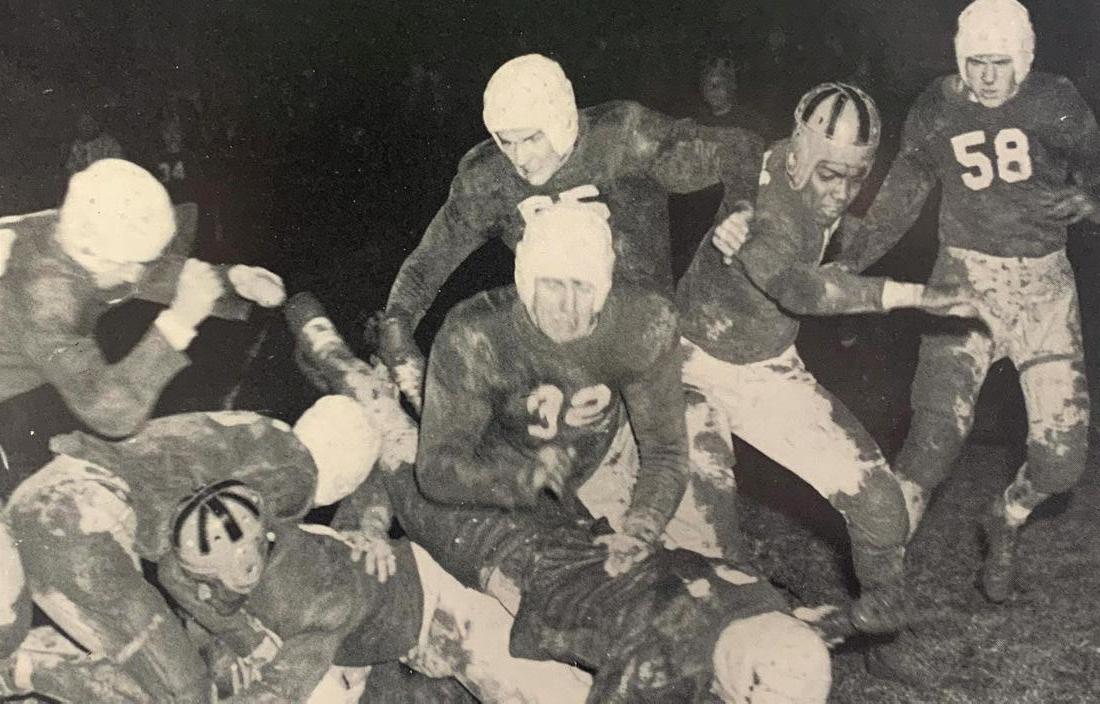“Steel Forged From Fire” O
ver Gonzaga’s history, there have been countless graduation speeches— many of them inspiring and memorable. However, as we look back through Gonzaga’s archives, the Kohlmann Address delivered by the late John J. Delaney ’50 on June 9, 1985, stands out as one of the most powerful and poignant. Mr. Delaney was the school’s first alumnus to be asked to deliver the Kohlmann address, and he did not disappoint. Printed on the following pages are his full remarks—remarks that still resonate as Gonzaga looks ahead to its next 200 years. “Graduation is a passage to be cherished and remembered. The graduation speech, on the other hand, is a sausage. It tends to be lengthy, lacking in meat, and above all, forgettable. The most memorable graduation speech that I ever heard was given by columnist Art Buchwald at Georgetown University in 1979. Speaking for his generation, Mr. Buchwald’s simple message to the next generation was: ‘We’ve got our oil. You go find your own oil.’ The message I bring you today as you graduate from Gonzaga is also a simple one, but unlike Mr. Buchwald’s obviously facetious remark, it is a message of reconciliation. It is Gonzaga’s message—to be ‘men for others.’ It was first presented to you when you entered these halls as freshmen four years ago. It is a challenge that has been set before Gonzaga students in one form or another since 1821. It finds its roots in the 16th Century prayer of Ignatius Loyola, the founder of the Society of Jesus: ‘Teach us, good Lord...to give and not to count the cost...’ In order to understand that challenge, it is first necessary to understand Gonzaga and why it is singularly qualified to make such a demand upon her sons. So today I would also like to share with you some reflections about this school, its history and spirit, and about you, the Class of 1985, and your role in its past and future. Thirty-five years ago, like you, I sat in this historic pre-Civil War church as a member of the graduating Class
22
gonzaga.org
of 1950. I remember little about what was said that day. But I do recall that it was a time of mixed emotions—happiness and nostalgia mixed with a dab of anxiety as we prepared for ‘life after Zag.’ I specifically remember my mind wandering back to a few years before when as a freshman I took that first walk up the wind-swept alley by St. Aloysius; observing the grated windows; the smokestacks; the cat walks; the only school in the country it seemed where the ‘back door’ was actually the ‘front door.’ It all contributed to an architectural style which perhaps could best be characterized as ‘Early American Alcatraz.’ Many times in those early days I would ask myself, ‘What is a nice little Chevy Chase boy like me doing here?’ Gradually, however, like so many others, I was swept up in the Eye Street scene and the unique spirit that has always been ‘Gonzaga.’ And on that long-ago graduation day, as my wandering mind returned to the present, I was extremely grateful that my life had been touched by this place. But ‘wait’ you say. ‘We know all of that. We, too, have lived the Gonzaga story. Indeed, for us, that story has been one of virtually unparalleled success. Why belabor us with these meanderings?’ It is a fair question. The Class of 1985 has not only lived the Gonzaga story, it has helped to bring this school to new thresholds of greatness. Its successes in academics, extra-curricular activities and athletics are a source of immense pride for the
John J. entire Gonzaga family. Yes, Delaney ’50 members of the Class of delivering the 1985 1985, Gonzaga is indeed on Kohlmann a roll. Like a phoenix, it has Address. literally risen from the ashes of this city and returned to its long held place of prominence. New and refurbished facilities abound. Applicants in unprecedented numbers seek admission. The Eagles fly high. Why then is it necessary to reflect on Gonzaga and its challenge to all of us to become ‘men for others’? What is the significance of such reflection when we look about us today and see what the school and the Class of 1985 have achieved? The answer, I submit, lies in another question—a question that is crucial. Is it possible that Gonzaga’s successes will blur our vision of what









